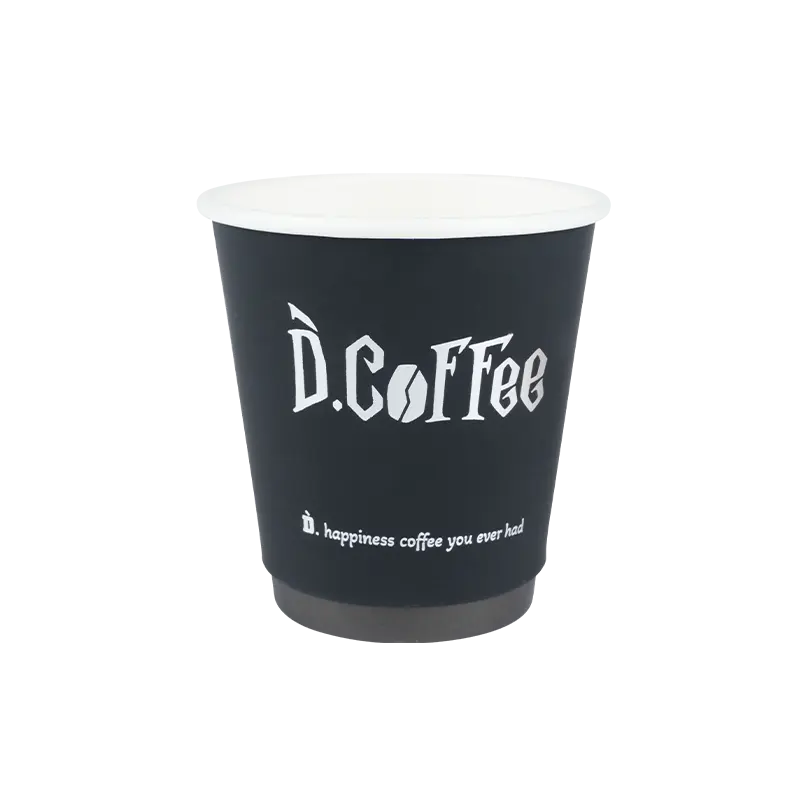Paper cup is a staple in homes, offices, and events worldwide. Whether you're sipping coffee at a café or serving drinks at a party, disposable paper cups offer convenience and hygiene. But how much do you really know about them? This comprehensive guide covers everything—types of paper cups, their benefits, environmental concerns, and how to choose the best one for your needs.
What Are Paper Cups Made Of?
Most eco-friendly paper cups are made from paperboard, a thick paper-based material. To make them liquid-resistant, they are lined with a thin layer of plastic (polyethylene) or biodegradable materials like PLA (polylactic acid). The components include:
- Paperboard (90-95%): Sourced from sustainable forests or recycled paper.
- Lining (5-10%): Prevents leaks and maintains cup rigidity.
- Ink: Used for printing designs; water-based inks are eco-friendly.
Types of Paper Cups and Their Uses
Different situations call for different types of disposable cups. Here’s a breakdown:
| Type | Description | Best For |
| Hot Drink Paper Cups | Designed to withstand high temperatures, usually lined with PE or PLA. | Coffee, tea, hot chocolate |
| Cold Drink Paper Cups | Thinner lining, often with a wax coating to prevent condensation. | Sodas, iced coffee, smoothies |
| Biodegradable Paper Cups | Made with compostable linings like PLA (from cornstarch). | Eco-conscious events, sustainable businesses |
| Double-Wall Paper Cups | Extra insulation to keep drinks hot/cold longer. | Premium coffee shops, takeaway beverages |
| Custom Printed Paper Cups | Branded with logos or designs for marketing. | Business promotions, weddings, events |
Benefits of Using Paper Cups
Why choose paper cups for parties or daily use? Here are the advantages:
- Hygienic: Single-use, reducing the risk of contamination.
- Convenient: Lightweight and easy to carry.
- Customizable: Can be printed with logos or designs.
- Better than Plastic: More biodegradable and less harmful when disposed.
- Insulating: Double-wall cups keep beverages at the right temperature.
Environmental Impact of Paper Cups
While paper cups are more eco-friendly than plastic, they still pose challenges:
- Recycling Issues: Most paper cups have a plastic lining, making recycling difficult unless separated.
- Deforestation Concerns: If not sourced sustainably, paper production can harm forests.
- Compostable Alternatives: PLA-lined cups break down in industrial composters but not in home compost bins.

How to Choose the Right Paper Cup
Picking the best paper cup for hot drinks or cold beverages depends on several factors:
| Factor | Consideration |
| Purpose | Hot drinks need heat-resistant lining; cold drinks need wax coating. |
| Size | Common sizes: 4 oz (espresso), 8 oz (standard coffee), 12-16 oz (large beverages). |
| Eco-Friendliness | Look for FSC-certified paper or compostable PLA lining. |
| Durability | Double-wall cups are sturdier and prevent burns. |
| Budget | Basic cups are affordable; custom-printed or biodegradable options cost more. |
Are Paper Cups Microwave Safe?
Most disposable paper cups are not microwave-safe due to the plastic lining, which can melt or release harmful chemicals. However, some PLA-lined biodegradable cups may withstand short heating periods. Always check the manufacturer’s instructions.
Paper Cups vs. Plastic Cups: Which Is Better?
Here’s a quick comparison:
| Feature | Paper Cups | Plastic Cups |
| Environmental Impact | Biodegradable options available, but recycling is tricky. | Non-biodegradable; contributes to plastic pollution. |
| Heat Resistance | Better for hot drinks (with proper lining). | Can warp or release toxins when heated. |
| Cost | Slightly more expensive. | Cheaper but less sustainable. |
| Customization | Easier to print designs. | Limited printing options. |
Creative Uses for Paper Cups
Beyond drinking, paper cups for crafts and other purposes include:
- Seed Starters: Biodegradable cups can be planted directly into soil.
- Organizers: Use them to hold pens, small tools, or snacks.
- Kids’ Crafts: Great for making DIY lanterns or puppets.
- Portion Control: Ideal for measuring snacks or ingredients.
How to Dispose of Paper Cups Responsibly
To minimize environmental harm:
- Recycle if Possible: Check local recycling guidelines—some facilities accept PE-lined cups.
- Compost Biodegradable Cups: Only in industrial composting facilities.
- Reduce Usage: Opt for reusable cups when possible.
Frequently Asked Questions About Paper Cups
1. Can paper cups be reused?
Not recommended, as they degrade quickly and may harbor bacteria.
2. How long does it take for a paper cup to decompose?
In ideal conditions, 6 months to 5 years, depending on lining and disposal method.
3. Are paper cups toxic?
Standard paper cups are food-safe, but avoid microwaving them.
4. What’s the most eco-friendly paper cup?
Look for FSC-certified, PLA-lined, or uncoated compostable cups.
Final Thoughts
Paper cups are a convenient and hygienic choice for beverages, but their environmental impact depends on proper disposal and material choices. By opting for sustainable paper cups and recycling correctly, you can enjoy their benefits while minimizing harm to the planet.


 English
English 中文简体
中文简体 عربى
عربى









